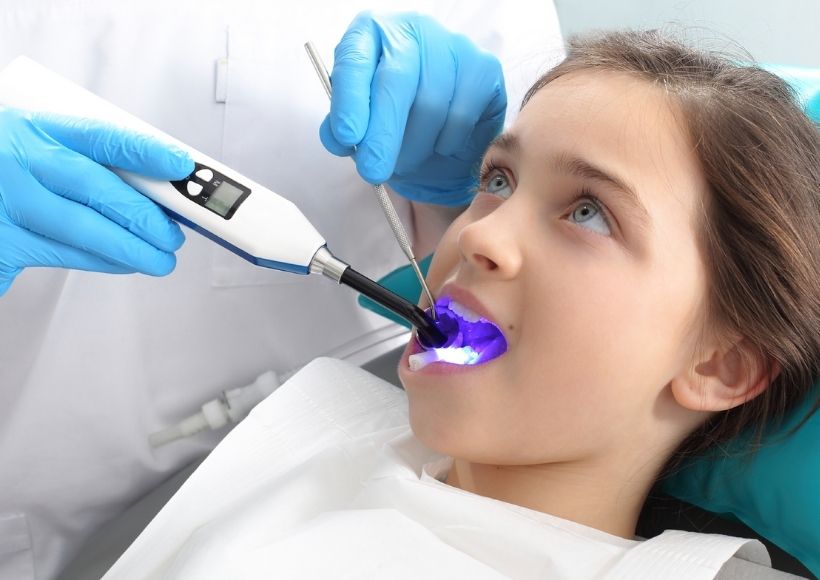According to the CDC, 1 in 5 children ages 5-11 have an untreated cavity. Children ages 5-19 often from low-income homes are twice as likely to have untreated tooth decay compared to children in high-income homes.
While some children are more likely to develop cavities than others, all children run the risk of having untreated cavities. Many warning signs can tell you your child has a cavity. Wondering if your child has a cavity?
This guide will provide some examples of signs to look for. Keep reading to learn what they are.
Table of Contents
1. Expressing Tooth Pain
Child cavity symptoms can express themselves in many different ways. One of the most common is tooth pain.
Tooth pain isn’t always an indication of a cavity. Children who are growing into their adult teeth often experience pain.
If you don’t see a tooth growing in and your child is complaining of pain, the most likely explanation is a cavity. Ask your child to point out the tooth that hurts so you can show your dentist and have the issue fixed.
2. Holes In Their Teeth
You should also check your child’s teeth for holes, chipping, or cracking. Holes form when a cavity hasn’t been taken care of and is rotting the tooth.
These holes can develop slowly, starting small. They might form between your child’s teeth making them hard to see.
Make sure that you’re checking your child’s teeth often. Any sign of this damage needs to be evaluated by a pediatric dentist right.
If not taken care of this issue can worsen. Tooth decay and permanent tooth loss are one possibility. Your child can also develop a severe infection as well.
3. Pain When Chewing Food
Other symptoms of children’s cavities include pain while chewing their food. Cavities start as small holes caused by bacteria, improper cleaning, and a bad diet.
As the cavity grows it’ll start to create more discomfort for your child. Your child might experience permanent pain or they might only feel pain when they’re trying to eat.
If your child complains of tooth pain while eating you’ll have to ask them to point out what specific area they’re experiencing the pain in so they can have it examined.
4. Gum Pain
Younger children often think they’re feeling pain in their gums when the source of pain is in their teeth. Regardless of this, checking their mouth for any issues is important.
Irritated gums are a result of improper brushing. Since your child is still learning to brush their teeth they might be brushing too hard. Not brushing the right way might only irritate the gums but it will most likely lead to cavities as well.
Make sure you’re supervising your child as they learn to brush their teeth and floss. This is the most important way to prevent cavities or figure out when they have one.
5. White Spots
If you’re asking yourself, does my kid have a cavity? Another way to check is by looking for white spots on your child’s teeth.
When cavities begin to form they’ll leave white spots on the surface of the teeth. As the cavity turns into more severe tooth decay, the white spot will widen around the tooth.
When the cavity is big enough it starts to cause nerve damage that leads to pain. Take your child to the dentist at the first sign of discoloration. This can help you prevent an issue from worsening.
6. Sensitivity To Hot Or Cold Food
Sensitivity to hot or cold food items is a strong indicator of a cavity in one of your child’s teeth. If your child feels pain or tingling in one or more teeth after drinking hot chocolate or eating ice cream, they probably have a cavity in the affected tooth.
Eating certain foods can break away at teeth enamel. Without the protection of enamel, your child will feel an uncomfortable sensation when eating anything at a more than mild temperature.
The extreme temperature of the food will reach the nerve in your child’s tooth and cause sensitivity.
7. Dark Spots
Cavities in kids can also be discovered when you see dark spots on their teeth. White spots turn a chalky brown as the cavity worsens.
The darker the spot gets the more severe the tooth decay is becoming. The dark spot on the tooth will grow until the entire tooth turns black if the decay isn’t taken care of right away.
You want to avoid your child losing their tooth or developing an infection from untreated tooth decay. This is all preventable if you take the right steps and get assistance from a trained dentist as soon as you find a problem.
8. Sensitivity To Sugar
Sensitivity to extreme temperatures is the most common form of sensitivity indicating a cavity. Sensitivity to other kinds of foods can also indicate that your child has a cavity, however.
Eating candy, soda, or any other kind of food that has a lot of sugar in it can lead to discomfort or a tingling sensation in your child’s teeth. In a similar fashion to other sensitivities, sugar overstimulates the exposed nerve in your child’s tooth without the protection of enamel.
If your child is experiencing any of these symptoms they should visit a family dentist right away.
Look For These Signs Of A Cavity In Your Child
There are many cavity signs to look for in your child’s teeth. If they’re complaining of pain or sensitivity, you should take them to your family dentist right away.
Did you find good tips in this guide? If you did, make sure to check out some of the other health tip blogs on our website.
Also Read :Importance Of Best Dental Implants

